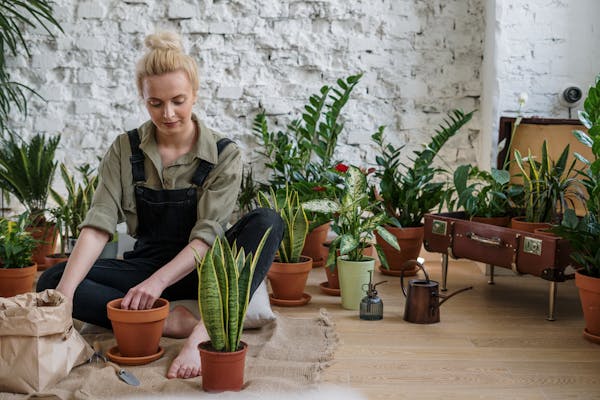Gardening Etcetera: Dear Master Gardener, why are so few flowers blue? | Local
I love the sky-blue color of our native Western blue flax and the pale blue of our Rocky Mountain columbine. But other than these two, I see very few blue flowers. Why is this?
Dear For the Love of Blue,
Because plants don’t naturally produce a true-blue pigment, the color is fairly scarce in the plant kingdom. But seeing that pollinators, especially bees, zero in on blooms bedecked in blue, some plant species have found it worth the extra energy and effort to make modifications to their red anthocyanin pigments to create blue ones. These modifications are complex biochemical processes involving changes in pH, shifts in light absorption, using flavonoids as co-pigments, employing several types of chemical bonding, and more.
Different species of flowers use different tactics creating blue from anthocyanins. Cornflowers do so by using a co-pigment along with calcium, iron, and magnesium ions. This particular anthocyanin is the same one that makes roses red when the pigment lacks the metal ions.
People are also reading…
Morning Glory buds are pink because their cell vacuoles carry a slightly acidic pH of 6.6. But as the flowers mature, the plant uses an intricate technique that renders the cell vacuoles slightly alkaline (pH 7.7). And so, mature morning glories are blue.
On the other hand, hydrangeas display pink flowers when planted in alkaline or neutral pH soils. Gardeners who don’t have slightly acidic soil but desire their hydrangeas to decorate in blue add aluminum sulfate to the soil. So, in a nutshell, it’s the abundance of aluminum present in acidic soils that is responsible for the blue coloration of some hydrangea flowers.
I haven’t found any literature on blue-pigment-forming strategies employed by Western blue flax (Linum lewisii) or Rocky Mountain Columbine (Aquilegia caerulea). I feel confident in saying, though, that they involve elaborate ways of altering anthocyanin compounds so the blooms absorb most of the color spectrum while reflecting the blue wavelengths.
I want to purchase a Colorado blue spruce tree, but some of the ones I see in northern Arizona are blue, while others are a boring green. How can I be sure my spruce will exhibit true blue?
In essence, Colorado blue spruces (Picea pungens) are blue because their needles exude waxes that coat the needles. The coating reflects wavelengths of blue, giving the tree a glacial blue hue. The tree doesn’t create these waxes merely to make the tree blue, but to protect it from inclement weather like heat, cold, and/or drying winds.
So why do some blue spruces garb in blue, while others don’t?
There are a number of reasons, the first being that certain trees have better genetics for reflecting blue than others. The best way to solve this is to scout for the bluest spruce available at your nursery. Ask your nursery if they carry cultivars specially known for their blue coloration.
Next, you’ll need to have a sun-filled spot in which to plant your spruce to allow it to photosynthesize at its fullest capacity. The soil must drain well and be kept evenly moist, not soggy. One inch of water per week should be ideal.
Once you have planted your truly blue spruce, remember it may lose some of its color if the waxy coating abrades away from excessive rain or drying winds. If this happens, you’ll have to wait a few weeks for the natural coating to return.
The newer the growth, the bluer the foliage, so it may be beneficial to cut out dead and crowded branches from time to time. Take extra caution to retain the tree’s natural symmetry.
Periodically check for stress and diseases. Browning or loss of needles anywhere on the tree may be due to excessive heat or drought. You’ll notice insect damage from signs like larval and pupal cases, live insects, chewed areas, and insect poop. In winter, look carefully for concealed spruce aphids, which cause branches to brown from the inner to the outer sections of branches.
For advice in these matters, email Coconino Cooperative Extension at [email protected]. Or send us your question and the answer may appear in Gardening Etcetera.
Cindy Murray is a biologist, co-editor of Gardening Etcetera. and a Coconino Master Gardener with Arizona Cooperative Extension.








